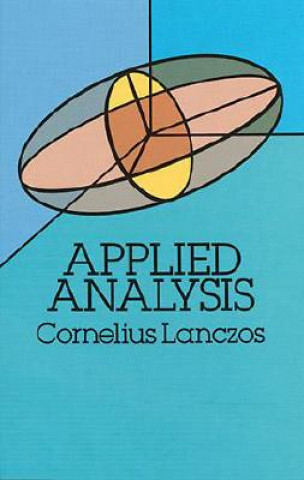
Kód: 02569611
Applied Analysis
Autor Cornelius Lanczos
INTRODUCTION 1. Pure and applied mathematics 2. "Pure analysis, practical analysis, numerical analysis" Chapter I ALGEBRAIC EQUATIONS 1. Historical introduction 2. Allied fields 3. Cubic equations 4. Numerical example 5. Newto ... celý popis
- Jazyk:
 Angličtina
Angličtina - Vazba: Brožovaná
- Počet stran: 576
Nakladatelství: Dover Publications Inc., 2003
- Více informací o knize

589 Kč

Skladem u dodavatele v malém množství
Odesíláme za 14-18 dnů
Potřebujete více kusů?Máte-li zájem o více kusů, prověřte, prosím, nejprve dostupnost titulu na naši zákaznické podpoře.
Přidat mezi přání
Mohlo by se vám také líbit
-

Lust for Corruption
948 Kč -

Caregiving Across the Lifespan
3313 Kč -

Making Heirloom Boxes
587 Kč -

Kunst an Stationen, Klassen 7/8
701 Kč -

Militarische Sicherheit - ein Beratungsgegenstand bei der Ausarbeitung des Grundgesetzes im Parlamentarischen Rat
1042 Kč -

Religionsunterricht ist in den oeffentlichen Schulen mit Ausnahme der bekenntnisfreien Schulen ordentliches Lehrfach
1254 Kč -

Himmelfahrt
1614 Kč
Darujte tuto knihu ještě dnes
- Objednejte knihu a zvolte Zaslat jako dárek.
- Obratem obdržíte darovací poukaz na knihu, který můžete ihned předat obdarovanému.
- Knihu zašleme na adresu obdarovaného, o nic se nestaráte.
Více informací o knize Applied Analysis
Nákupem získáte 59 bodů
 Anotace knihy
Anotace knihy
INTRODUCTION 1. Pure and applied mathematics 2. "Pure analysis, practical analysis, numerical analysis" Chapter I ALGEBRAIC EQUATIONS 1. Historical introduction 2. Allied fields 3. Cubic equations 4. Numerical example 5. Newton's method 6. Numerical example for Newton's method 7. Horner's scheme 8. The movable strip technique 9. The remaining roots of the cubic 10. Substitution of a complex number into a polynomial 11. Equations of fourth order 12. Equations of higher order 13. The method of moments 14. Synthetic division of two polynomials 15. Power sums and the absolutely largest root 16. Estimation of the largest absolute value 17. Scanning of the unit circle 18. Transformation by reciprocal radii 19. Roots near the imaginary axis 20. Multiple roots 21. Algebraic equations with complex coefficients 22. Stability analysis Chapter II MATRICES AND EIGENVALUE PROBLEMS 1. Historical survey 2. Vectors and tensors 3. Matrices as algebraic quantities 4. Eigenvalue analysis 5. The Hamilton-Cayley equation 6. Numerical example of a complete eigenvalue analysis 7. Algebraic treatment of the orthogonality of eigenvectors 8. The eigenvalue problem in geometrical interpretation 9. The principal axis transformation of a matrix 10. Skew-angular reference systems 11. Principal axis transformation of a matrix 12. The invariance of matrix equations under orthogonal transformations 13. The invariance of matrix equations under abitrary linear transformations 14. Commutative and noncommutative matrices 15. Inversion of a triangular matrix 16. Successive orthogonalization of a matrix 17. Inversion of a triangular matrix 18. Numerical example for the successive orthogonalization of a matrix 19. Triangularization of a matrix 20. Inversion of a complex matrix 21. Solution of codiagonal systems 22. Matrix inversion by partitioning 23. Peturbation methods 24. The compatibility of linear equations 25. Overdetermination and the principle of least squares 26. Natural and artificial skewness of a linear set of equations 27. Orthogonalization of an arbitrary linear system 28. The effect of noise on the solution of large linear systems Chapter III. LARGE-SCALE LINEAR SYSTEMS 1 Historical introduction 2 Polynomial operations with matrices 3 "The p,q algorithm" 4 The Chebyshev polynomials 5 Spectroscopic eigenvalue analysis 6 Generation of the eigenvcctors 7 Iterative solution of large-scale linear systems 8 The residual test 9 The smallest eigenvalue of a Hermitian matrix 10 The smallest eigenvalue of an arbitrary matrix Chapter IV. HARMONIC ANALYSIS 1. Historical notes 2. Basic theorems 3. Least square approximations 4. The orthogonality of the Fourier functions 5. Separation of the sine and the cosine series 6. Differentiation of a Fourier series 7. Trigonometric expansion of the delta function 8. Extension of the trigonometric series to the nonintegrable functions 9. Smoothing of the Gibbs oscillations by the s factors 10. General character of the s smoothing 11. The method of trigonometric interpolation 12. Interpolation by sine functions 13. Interpolation by cosine functions 14. Harmonic analysis of equidistant data 15. The error of trigonometric interpolation 16. Interpolation by Chebyshev polynomials 17. The Fourier integral 18. The input-output relation of electric networks 19. Empirial determination of the input-output relation 20. Interpolation of the Fourier transform 21. Interpolatory filter analysis 22. Search for hidden periodicities 23. Separation of exponentials 24. The Laplace transform 25. Network analysis and Laplace transform 26. Inversion of the Laplace transform 27. Inversion by Legendre polynomials 28. Inversion by Chebysev polynomials 29. Inversion by Fourier series 30. Inversion by Laguerre functions 31. Interpolation of the Laplace transform Chapter V DATA ANALYSIS 1. Historical introduction 2. Interpolation by simple differences 3. Interpolation by central differences 4. Differentiation of a tabulated function 5. The difficulties of a difference table 6. The fundemental principle of the method of least squares 7. Smoothing of data by fourth differences 8. Differentiation of an empirical function 9. Differentiation by integration 10. The second derivative of an empirical function 11. Smoothing in the large by Fourier analysis 12. Empirical determination of the cutoff frequency 13. Least-square polynomials 14. Polynomial interpolations in the large 15. The convergence of equidistant polynomial interpolation 16. Orthogonal function systems 17. Self-adjoint differential operators 18. The Sturm-Liouville differential equation 19. The hypergeometric series 20. The Jacobi polynomials 21. Interpolation by orthogonal polynomials Chapter VI QUADRATURE METHODS 1. Historical notes 2. Quadrature by planimeters 3. The trapezoidal rule 4. Simpson's rule 5. The accuracy of Simpson's formula 6. The accuracy of the trapezoidal rule 7. The trapezoidal rule with end correction 8. Numerical examples 9. Approximation by polynomials of higher order 10. The Gaussian quadrature method 11. Numerical example 12. The error of the Gaussian quadrature 13. The coefficients of a quadrature formula with arbitrary zeros 14. Gaussian quadrature with rounded-off zeros 15. The use of double roots 16. Engineering applications of the Gaussian quadrature method 17. Simpson's formula with end correction 18. Quadrature involving exponentials 19. Quadrature by differentiation 20. The exponential function 21. Eigenvalue problems 22. Convergence of the quadrature based on boundary values Chapter VII POWER EXPANSIONS 1. Historical introduction 2. Analytical extension by reciprocal radii 3. Numerical example 4. The convergence of the Taylor series 5. Rigid and flexible expansions 6. Expansions in orthogonal polynomials 7. The Chebyshev polynomials 8. The shifted Chebyshev polynomials 9. Telescoping of a power series by successive reductions 10. Telescoping of a power series by rearrangement 11. Power expansions beyond the Taylor range 12. The t method 13. The canonical polynomials 14. Examples of the t method 15. Estimation of the error by the t method 16. The square root of a complex number 17. Generalization of the t method. The method of selected points APPENDIX: NUMERICAL TABLES INDEX
 Parametry knihy
Parametry knihy
Zařazení knihy Knihy v angličtině Mathematics & science Mathematics Calculus & mathematical analysis
589 Kč
- Plný název: Applied Analysis
- Autor: Cornelius Lanczos
- Jazyk:
 Angličtina
Angličtina - Vazba: Brožovaná
- Počet stran: 576
- EAN: 9780486656564
- ISBN: 048665656X
- ID: 02569611
- Nakladatelství: Dover Publications Inc.
- Hmotnost: 588 g
- Rozměry: 214 × 144 × 29 mm
- Datum vydání: 28. March 2003
Oblíbené z jiného soudku
-
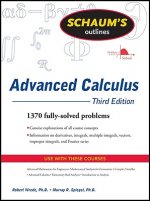
Schaum's Outline of Advanced Calculus, Third Edition
437 Kč -
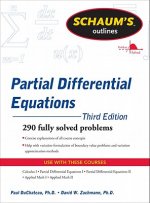
Schaum's Outline of Partial Differential Equations
598 Kč -

Calculus
2247 Kč -
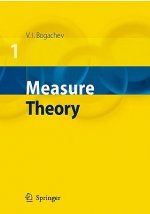
Measure Theory
5145 Kč -

Differential Equations and Linear Algebra
1750 Kč -

Infinite Powers: How Calculus Reveals the Secrets of the Universe
353 Kč -

Schaum's Outline of Lagrangian Dynamics
676 Kč -
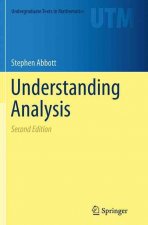
Understanding Analysis
1213 Kč -
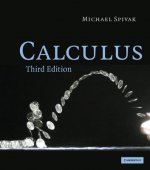
Calculus
1436 Kč -
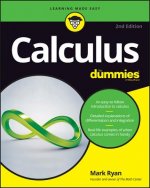
Calculus For Dummies, 2nd Edition
447 Kč -

Cartoon Guide to Calculus
429 Kč -
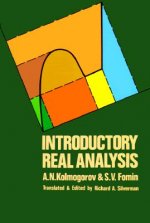
Introductory Real Analysis
595 Kč -
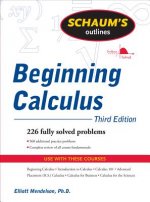
Schaum's Outline of Beginning Calculus, Third Edition
715 Kč -

Visual Introduction to Differential Forms and Calculus on Manifolds
1932 Kč -
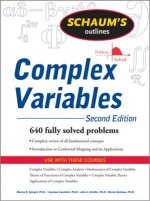
Schaum's Outline of Complex Variables, 2ed
716 Kč -

Precalculus: Mathematics for Calculus, International Metric Edition
2680 Kč -
![Elements of the Theory of Functions and Functional Analysis [Two Volumes in One] Elements of the Theory of Functions and Functional Analysis [Two Volumes in One]](https://media.libris.to/jacket/08800728t.jpg)
Elements of the Theory of Functions and Functional Analysis [Two Volumes in One]
338 Kč -

Essential Calculus: Early Transcendentals
3045 Kč -
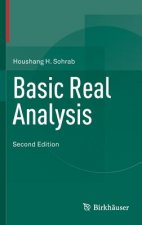
Basic Real Analysis
2720 Kč -

Schaum's Outline of Calculus of Finite Differences and Difference Equations
637 Kč -

Schaum's Outline of Fourier Analysis with Applications to Boundary Value Problems
676 Kč -

Schaum's Outline of Laplace Transforms
637 Kč -

Workbook for Differential Equations
3060 Kč -

Quantum Field Theory II
3017 Kč -
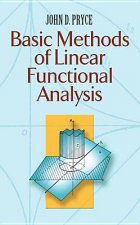
Basic Methods of Linear Functional Analysis
478 Kč -

Essential Calculus
2570 Kč -

Integral Equations
380 Kč -

Calculus Made Easy
469 Kč -
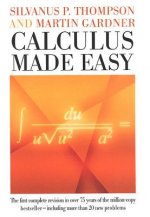
Calculus Made Easy
740 Kč -

Measurement
742 Kč -

Calculus: Early Transcendentals, Metric Edition
2570 Kč -
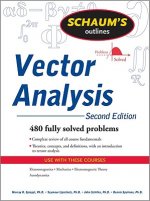
Schaum's Outline of Vector Analysis, 2ed
500 Kč -
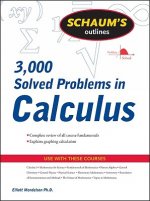
Schaum's 3,000 Solved Problems in Calculus
1107 Kč -

Calculus Story
419 Kč -

Noncommutative Geometry
1670 Kč -

Prime Suspects
693 Kč -

Programming in Haskell
1115 Kč -

Numerical Recipes 3rd Edition
3192 Kč -
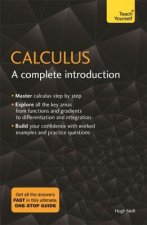
Calculus: A Complete Introduction
410 Kč -

Schaums Outline of Tensor Calculus
603 Kč -

Calculus, Metric Edition
2607 Kč -

Div, Grad, Curl, and All That
1577 Kč -

Complex Analysis
2422 Kč -

Methods of Nonlinear Analysis
2720 Kč -

Real Mathematical Analysis
1830 Kč -
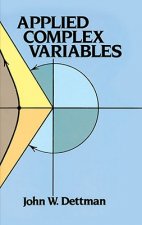
Applied Complex Variable
677 Kč -
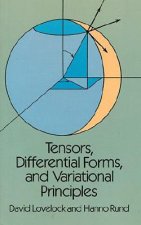
Tensors, Differential Forms and Variational Principles
454 Kč -

Differential Equations
1772 Kč -

Ramanujan Summation of Divergent Series
1830 Kč
Osobní odběr Praha, Brno a 12903 dalších
Copyright ©2008-24 nejlevnejsi-knihy.cz Všechna práva vyhrazenaSoukromíCookies


 Vrácení do měsíce
Vrácení do měsíce 571 999 099 (8-15.30h)
571 999 099 (8-15.30h)